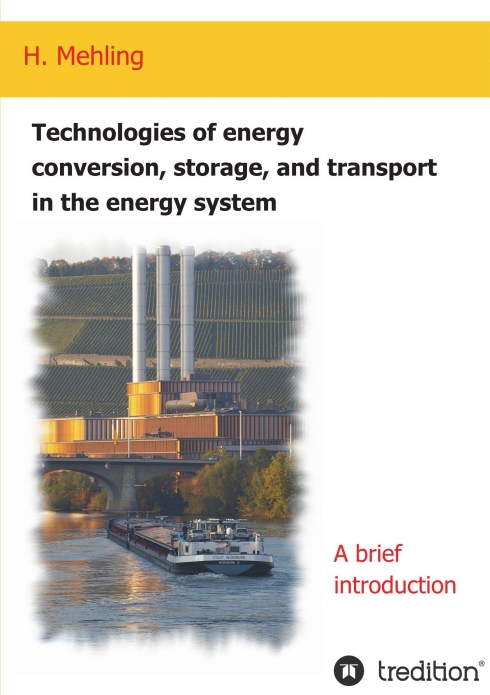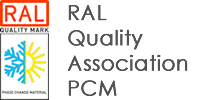Dr. Harald Mehling (Dipl.-Phys., M.A.)
Consultant (R&D), Author, Lecturer
Thermal Energy Storage, Phase Change Materials, Thermal Analysis
Weingartenstr. 37
97072 Würzburg
Germany
Tel.: +49 152 03 806 387
email: harald.mehling@gmail.com
LinkedIn: www.linkedin.com/in/harald-mehling
ResearchGate: https://www.researchgate.net/profile/Harald_Mehling
Amazon Authors: www.amazon.com/author/harald_mehling
Dr. Harald Mehling works independently as consultant, author, and lecturer. He has 20 years of experience in R&D, with a focus on heat transfer and heat storage, covering materials to applications. He is author of more than 80 publications, among them “Heat and cold storage with PCM – An up to date introduction into basics and applications” together with Prof. L.F. Cabeza, and contributed to several chapters in “Thermal energy storage for sustainable energy consumption – fundamentals, case studies and design”. His latest book is “Technologies of energy conversion, storage, and transport in the energy system – A brief introduction”.
Projects
Information will follow soon
Publications
Technologies of energy conversion, storage, and transport in the energy system
Technologies of energy conversion, storage, and transport in the energy system – A brief introduction
Harald Mehling, Tredition, 2016, ISBN: 978-3-7345-4049-3
 The necessity to adapt the energy system due to limited energy resources and environmental damage, e.g. climate change, is today widely accepted. To understand, discuss, and manage the adaption a basic knowledge on the technologies used in the energy system is needed.
The necessity to adapt the energy system due to limited energy resources and environmental damage, e.g. climate change, is today widely accepted. To understand, discuss, and manage the adaption a basic knowledge on the technologies used in the energy system is needed.
The book tries to give a brief introduction in a way that is suitable for people without a higher scientific or technical education. It focuses on basic effects and general concepts, and tries to explain how things work without complex formulas; only basic physics and chemistry at a high school level is used. Crucial points are illustrated by examples. Additional information given includes sources of short movies in the internet that describe different technologies, often in action, and can be especially helpful for teaching. Further on, sources with a detailed scientific and technical treatment to go beyond a brief introduction are given.
The book covers the essentials regarding energy, the different energy technologies, and finally how the different technologies are combined forming the energy system. The essentials introduce and explain the different energy forms, as there are mechanical, thermal, electrical, magnetical, chemical, and nuclear energy, the different types of processes of energy conversion, storage, and transport, and the exchange of energy as work and heat. Following the essentials is the description of the individual technologies for energy conversion, storage and transport. For each of them, the basics and the different technologies are discussed, starting from single step processes, as in materials, to multiple step processes, as in power plants. In the energy system, many of these technologies are connected to supply the desired energy to the user. Basic considerations on energy networks, a description of networks for thermal, electrical, chemical, and nuclear energy individually and their connections in the global energy system conclude the book.
You will find more information on www.tredition.de.
Calorimetric Measurements on PCM (video presentation)
 The presentation “Calorimetric measurements on PCM” is intended to give an introduction and overview, for people starting to work in the field as well as for people who already have experience. It comprises 36 slides and takes a bit more than half an hour. The content comprises three parts. The first part is an introduction, and gives information on the historic background and a general introduction to standards. The second part describes the RAL standard for industry, including its background, the required data, resolution, and accuracy, a survey of common measurement techniques, results of an internal comparison test, and the standard itself. The third and final part describes the IEA standard for R&D using DSC, which is based on the RAL standard, including its background, the standard, and achieved improvements.
The presentation “Calorimetric measurements on PCM” is intended to give an introduction and overview, for people starting to work in the field as well as for people who already have experience. It comprises 36 slides and takes a bit more than half an hour. The content comprises three parts. The first part is an introduction, and gives information on the historic background and a general introduction to standards. The second part describes the RAL standard for industry, including its background, the required data, resolution, and accuracy, a survey of common measurement techniques, results of an internal comparison test, and the standard itself. The third and final part describes the IEA standard for R&D using DSC, which is based on the RAL standard, including its background, the standard, and achieved improvements.
You can download the presentation here (77 MB).
